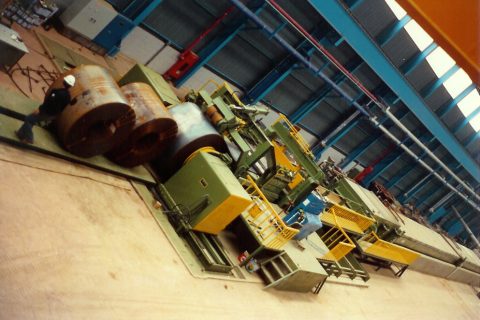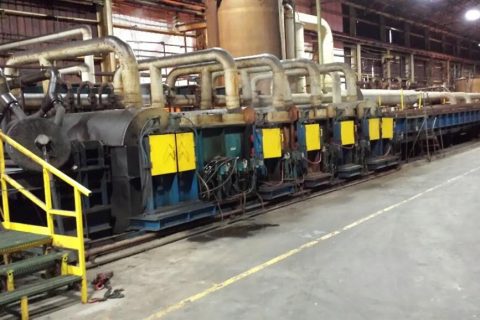Coil to Coil Pickling lines are a part of the finishing process of flat rolled steel in which oxides and scale are removed from the surface of the strip by dissolution in acid. Generally HCL is used for carbon steel applications and hydrofluoric or nitric acids are used for stainless steel.
Push-pull pickling lines primarily handle coils and do not have welders at the entry sections nor storage areas for the strips. Therefore, each coil is threaded through the process line separately.
The pickling tanks of a push-pull line are generally shorter than those of a continuous line because the line speed during pickling (from about 150 to 660 fpm) is usually slower than that of a continuous line. Other operating procedures of a push-pull line are similar to those of a continuous line. The pickle “liquor” is usually maintained at 180 °F or higher by external heat exchangers. A rinse section follows the pickling section to remove acid residue from the strip surface with fresh water. Pickled coils can be then coated on both side of the strip with a rust preventative oil or lubricant for later downstream processes like stamping or ship out dry for parts to be later rollformed and painted for example.


